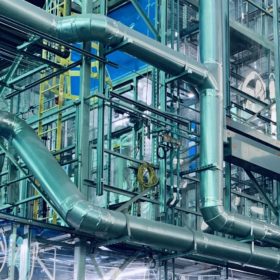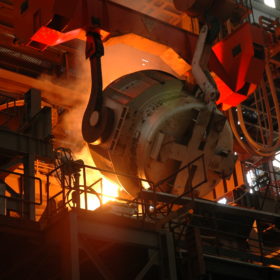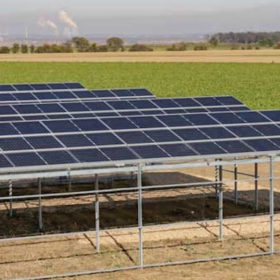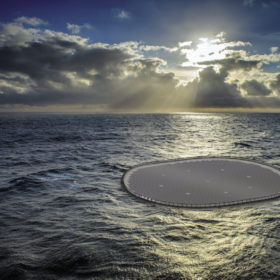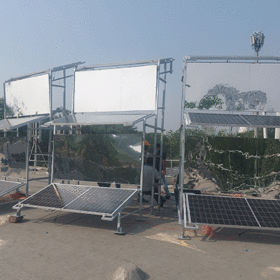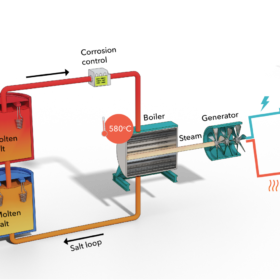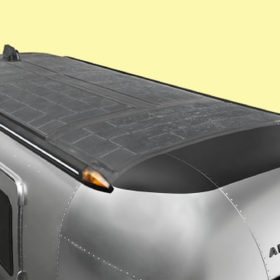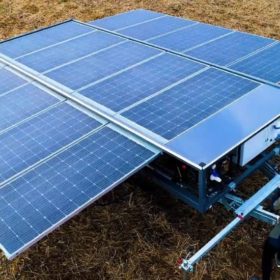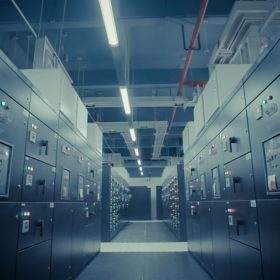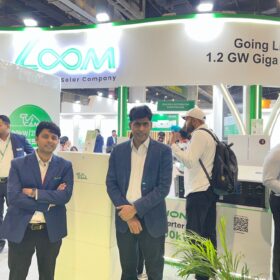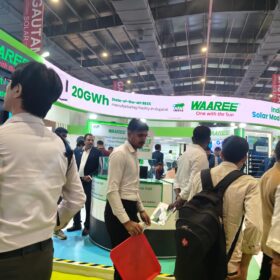Water-based electrolyzer for green hydrogen production
Verdagy has secured a $25 million investment for its new electrolyzer technology, which provides hydrogen fuel for heavy industrial applications. The membrane-based technology uses large active area cells, high current densities, and broad operating ranges to deliver hydrogen at scale.
India’s technology path key to global steel decarbonisation
The global steel industry is poised to shift from coal to hydrogen. With enough high-quality iron ore and low prices for hydrogen, India could play a pivotal role in global steel decarbonisation given its large and growing economy.
New agrivoltaic system design from Germany
Germany’s Sunfarming is testing the new project design in cooperation with research centers Jülich and the Fraunhofer ISE.
The long read: Is the coast clear for solar to head offshore?
There are literal oceans of space for floating PV (FPV), beyond the first applications on lakes, reservoirs and hydro-electric dams. For countries where land is at a premium, such as the Netherlands, Singapore, and Japan, offshore FPV is of particular interest. Of course, unlike a reservoir, the sea is rarely still. Thankfully FPV’s growth has also brought technological innovation and maturity with it, meaning the coast could now be clear for solar to head offshore.
Portable, space-saving solar towers
Researchers at the Indian Institute of Technology Delhi have developed solar towers that can be moved from one place to another and can generate 20-30% more power while requiring only 50-60% space compared to conventional mounting setups.
Storing solar power with grid-scale molten hydroxide
Seaborg Technologies, a Danish manufacturer of molten salt nuclear reactors, has turned a technology that was originally developed for nuclear power into a large-scale storage solution for wind and solar. It has developed a storage system that uses renewable energy to heat salt with electrical heaters, based on two-tank molten salt storage designs developed for concentrated solar power plants.
Solar-powered camper from Airstream is a two-wheeled electric car
The camper can be driven and parked without the use of a car, is integrated with solar, and optimized for the electric vehicle revolution.
Saatvik Solar doubles module capacity to 1GW with new fab
The Indian solar manufacturer’s new facility in Haryana is equipped to make mono PERC, half-cut, multi-busbar technology, to produce high-efficiency PV modules with 530-610Wp of power output.
Solar trailer for off-grid applications from France
Developed by French start-up Ecosun, the trailer is equipped with 15 solar panels with output of 360 W and batteries with a storage capacity of 23 kWh. It can be used for construction sites, military camps and water pumping systems.
Forget batteries, what if surplus renewable energy could be stored as information?
A pair of researchers from UC San Diego has proposed to precompute certain data when the grid is flooded with solar or wind power, and then store it on servers for later use.
